Microsoft Entra ID (formerly Azure Active Directory)
Learn how to configure Pomerium to use Microsoft Entra ID (formerly Azure Active Directory) as an identity provider.
While we do our best to keep our documentation up to date, changes to third-party systems are outside our control. Refer to Quickstart: Register an application with the Microsoft identity platform from Microsoft's documentation as needed, or let us know if we need to re-visit this page.
Before you begin
To complete this guide, you must:
- Install Pomerium
- Create a free Microsoft 365 administration account (or have admin privileges with an existing Microsoft 365 account)
Access your Entra ID instance
If you want users to sign in to an application using a Microsoft Entra ID account, either from your organization or from external directories, you must register the application through the Microsoft Azure portal.
If you have a Microsoft 365 account (formerly Office 365), you can use your account's Entra ID instance instead of creating a new one. You can access Entra ID from the Microsoft 365 admin center or directly from the Azure portal.
To find your Microsoft 365 Entra ID instance from the Microsoft 365 admin center:
- Sign in to Microsoft 365
- In the sidebar, select Admin
- In the admin center sidebar, select Identity
To find your Microsoft 365 Entra ID instance from the Azure portal:
- Sign in to Azure
- Select the sidebar menu to expand It
- Select Microsoft Entra ID
Either of these instructions will take you to the Entra ID backing your Microsoft 365 account.
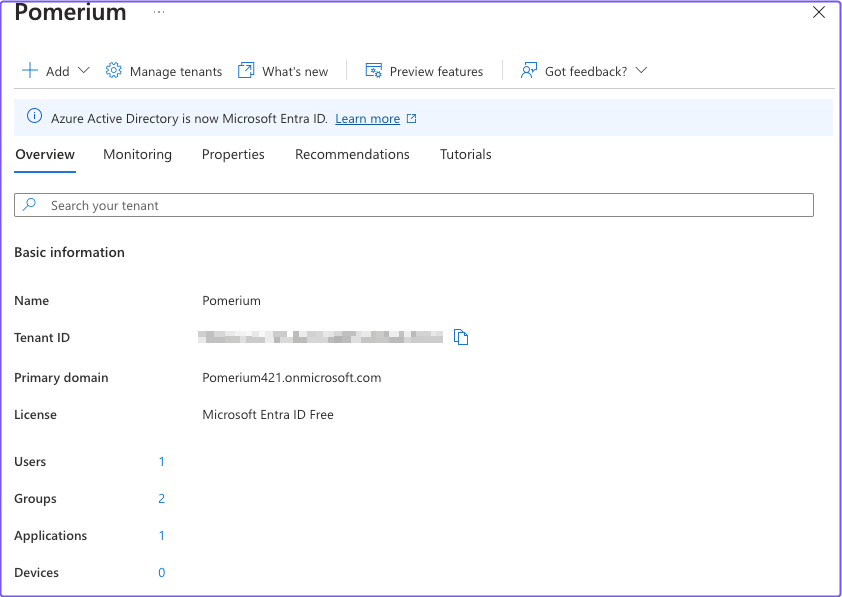
Register a new application
Once you're in the Entra ID dashboard, register an application:
-
Select + Add and App registration.
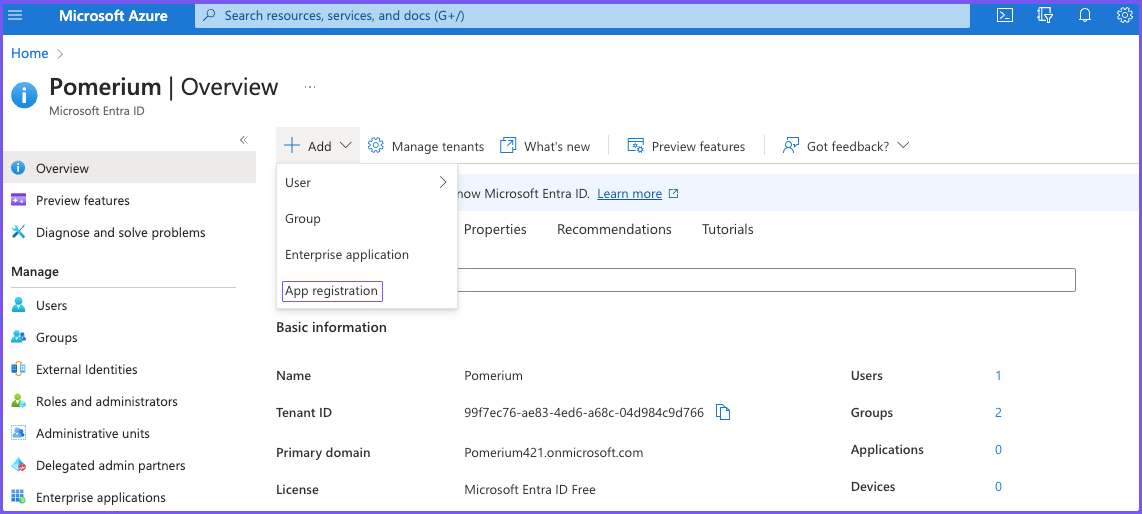
-
Enter a name for the application. Under Redirect URI, select Web and set the value to
https://${authenticate_service_url}/oauth2/callback. Select Register.
-
After you register the application, save the Application (client) ID and Directory (tenant) ID for later. Under Client credentials, select Add a certificate or secret.

-
In the Certificates & secrets screen, select the Client secrets tab, then + New client secret. In the Add a new client secret panel, give the key a description and expiry time. (You will use this key as your Client Secret later.)
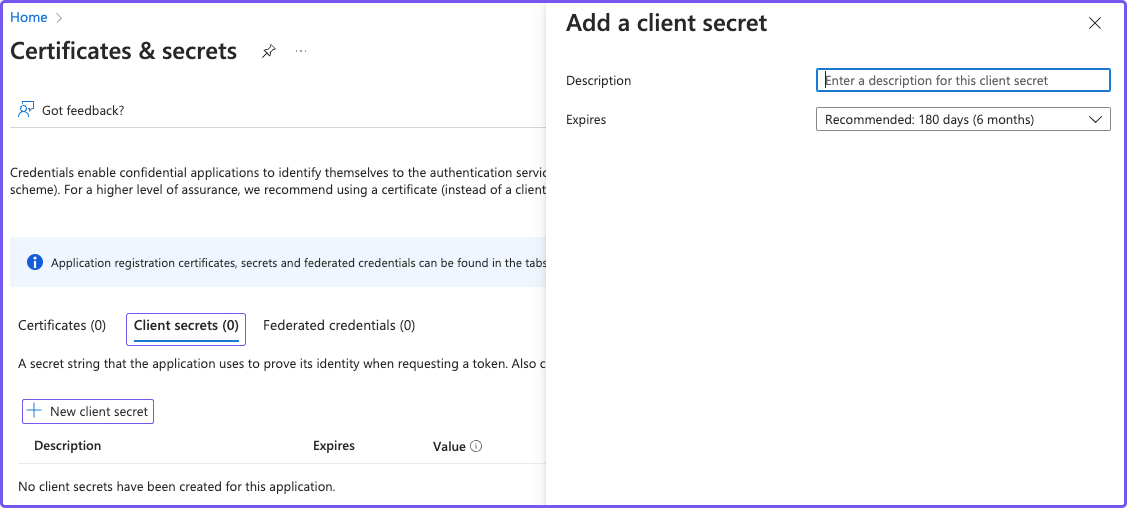 note
noteMake sure you save the client secret Value and not the Secret ID. After you generate the secret and leave the screen, you can't view or copy the secret value unless you delete the secret and generate a new one.

API Permissions
To get group information from Entra ID, you must enable the necessary Microsoft Graph API permissions.
You will use the Group ID to affirm group membership (not the Group Display Name).
-
From the App registrations page, select API permissions:
- Select + Add a permission, then Microsoft Graph API
- Select Application permissions
- Use the filter to select the checkboxes for Directory.Read.All, Group.Read.All and User.Read.All, then select Add permissions

You can also optionally select Grant admin consent for Default Directory, which suppresses the permission screen on first sign-in for users.
-
Go back to the App registrations page and select your app. Select the Endpoints tab.

Copy the value under the OpenID Connect metadata document field:
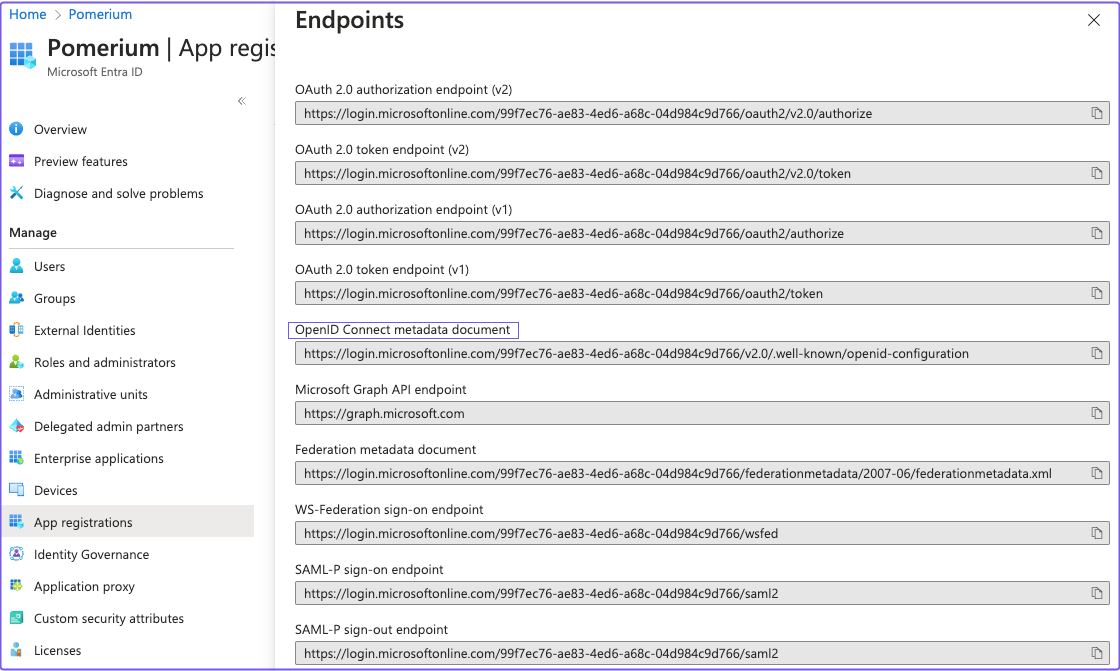
The OpenID Connect metadata document value will form the basis for Pomerium's Provider URL setting.
For example, if the Entra ID OpenID Connect URL is:
https://login.microsoftonline.com/0303f438-3c5c-4190-9854-08d3eb31bd9f/v2.0/.well-known/openid-configuration`
Then the Pomerium Identity Provider URL would be:
https://login.microsoftonline.com/0303f438-3c5c-4190-9854-08d3eb31bd9f/v2.0
Pomerium Configuration
Configure Pomerium with the identity provider settings you saved in the previous steps:
- Config file keys
- Environment variables
idp_provider: 'azure'
idp_provider_url: 'https://login.microsoftonline.com/{REPLACE-WITH-OIDC-METADATA-STRING}/v2.0'
idp_client_id: 'REPLACE-WITH-CLIENT-ID'
idp_client_secret: 'REPLACE-WITH-CLIENT-SECRET'
IDP_PROVIDER="azure"
IDP_PROVIDER_URL="https://login.microsoftonline.com/{REPLACE-WITH-OIDC-METADATA-STRING}/v2.0"
IDP_CLIENT_ID="REPLACE-WITH-CLIENT-ID"
IDP_CLIENT_SECRET="REPLACE-WITH-CLIENT-SECRET"
Pomerium currently uses azure as the idp_provider name to refer to Microsoft Entra ID.
Getting Groups
- Custom Claim (Open Source)
- Directory Sync (Enterprise)
Custom Claim (Open Source)
To authorize users based on their group membership, add a group claim to the identity token:
- Go to App registrations and select Token configuration, then + Add groups claim.

- In the Edit groups claim panel, select the appropriate group types. Under Customize token properties by type, select Group ID for ID, Access, and SAML.
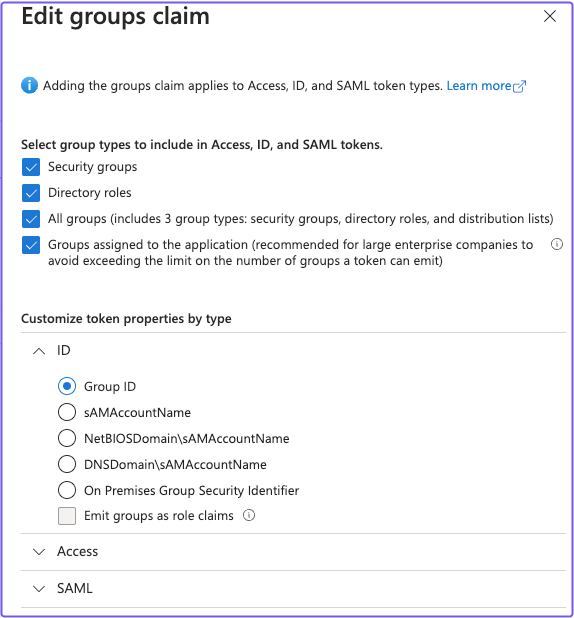
Apply custom claims to a policy
You can use the Claim PPL criterion to factor in the groups value in your authorization policy.
For example:
routes:
- from: 'https://verify.localhost.pomerium.io'
to: 'https://verify.pomerium.com'
policy:
- allow:
and:
- claim/groups: 'e14f56fd-b956-4009-b06c-dc8a5e9207c8'
The groups claim contains group IDs, not group names.
Directory Sync (Enterprise)
Entra ID uses the same Client ID and Client Secret used in Pomerium Core.
Configure Pomerium Enterprise Console
Under Settings > Identity Providers, select "Azure" as the identity provider and set the Client ID, Client Secret, and Directory (Tenant) ID.
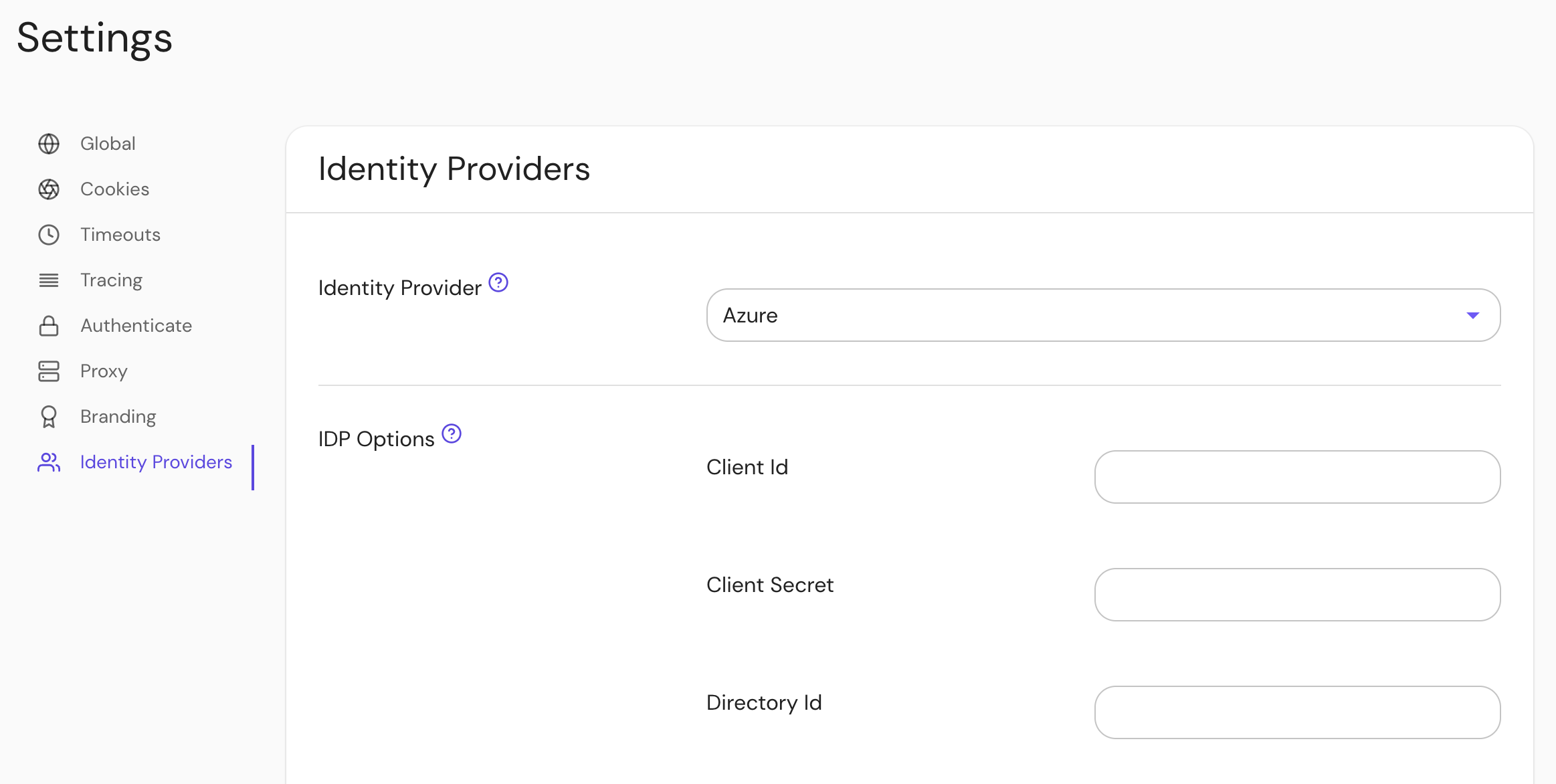
Troubleshooting
- In our testing, we found that users could be created in an Entra ID directory without an email address as part of their user claim. Pomerium user identity depends largely on the associated email address.
- If your default user in the Entra ID directory is unauthorized (
403) even when specified as allowed in a policy by the user claim, you can mitigate this behavior by creating a group membership and corresponding policy.